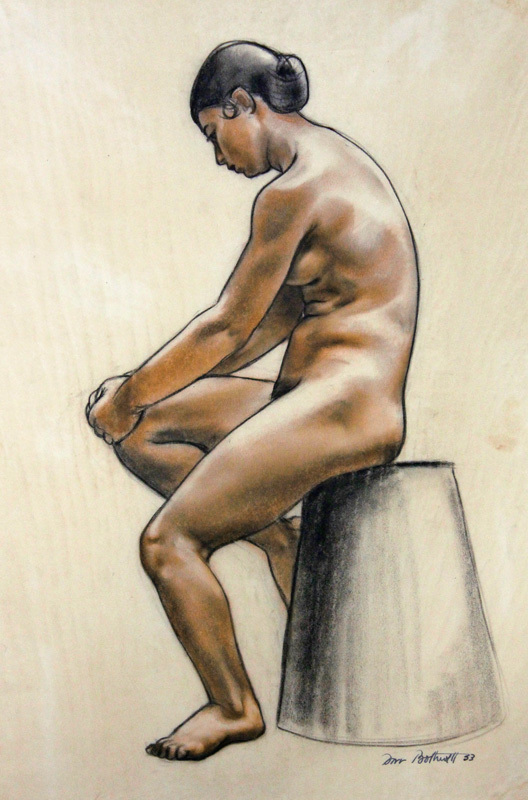
19th, 20th & 21st Century Fine Prints
707-546-7352 · fax 707-546-7924 · web: www.annexgalleries.com · email: artannex@aol.com
Model Seated by Dorr Bothwell

Model Seated
Dorr Bothwell
Model Seated
Dorr Bothwell
1902 - 2000 (biography)In the early 1920s Dorr Bothwell took courses in sculpture from Ralph Stackpole in San Francisco, who was greatly influenced by the work of Mexican painter Diego Rivera. The style of the Mexican Modernist sculptors, painters, and muralists influenced many of the leading modern artists of California, and this is likely where Bothwell's stylized imagery originated.
In her first images of the island of Samoa - where she landed in summer of 1928 - Bothwell's figures could be mistaken for the preliminary mural sketches of Mexican artists: voluminous, rounded shapes with minimal detail, keeping the visual information relegated to a brief and intimate moment. Her artistic output from this time centered mostly on the human figure. In this elegantly executed drawing of a Samoan woman, done in 1933 using conte crayon, she depicts her subject with her hair pulled back in a shell comb, seated on an upturned bin while holding her right knee.
Dorris Hodgson Bothwell, known as Dorr, was born in San Francisco in 1902. Her family moved to San Diego in 1911 and Bothwell began her art studies five years later with Anna Valentien. She returned to San Francisco in 1921 and enrolled in the California School of Fine Arts where she was greatly influenced by Gottardo Piazzoni. Bothwell continued her studies at the University of Oregon, Eugene and then returned to San Francisco where she attended the Rudolph Schaeffer School of Design.
Bothwell moved to San Diego and then to Los Angeles where she joined the circle of post-surrealists which included Lorser Feitelson and Helen Lundberg. She studied under Feitelson in classes organized by the Public Works of Art Project and she was accepted into the mural division of the WPA where she painted murals in Los Angeles, Riverside, and San Francisco.
In 1968, Bothwell and Marlys Mayfield co-wrote the book 'Notan: The Dark-Light Principle of Design,' which encompassed the principles developed in her teaching. She received the Abraham Rosenberg Fellowship, the 1979 San Francisco Women in the Arts award, and was twice awarded Pollock-Krasner grants.


